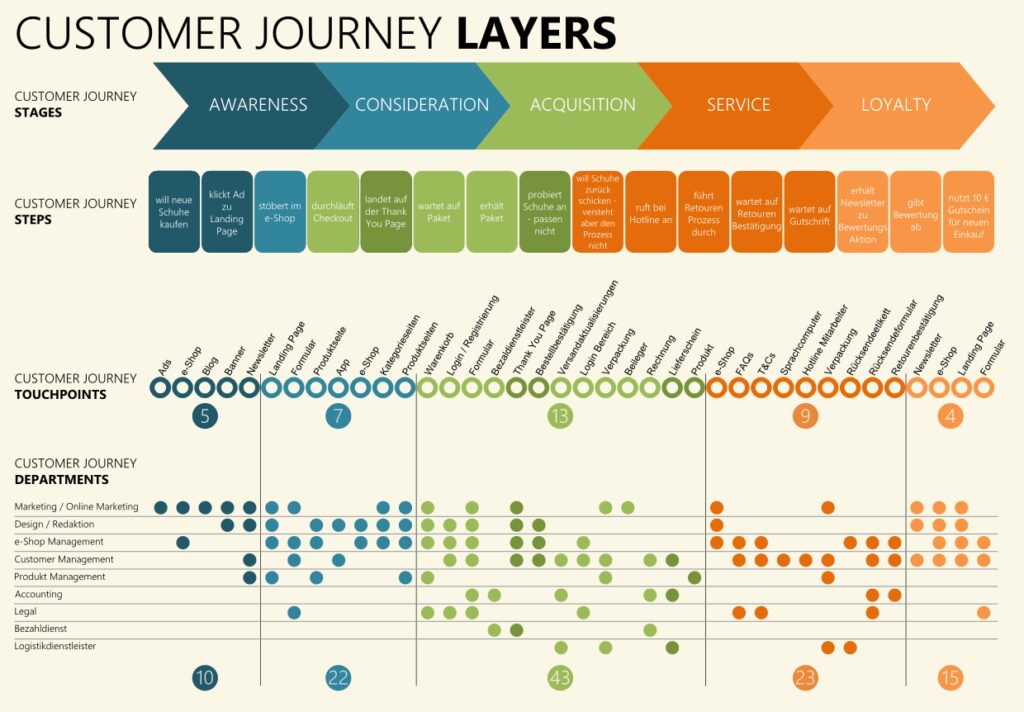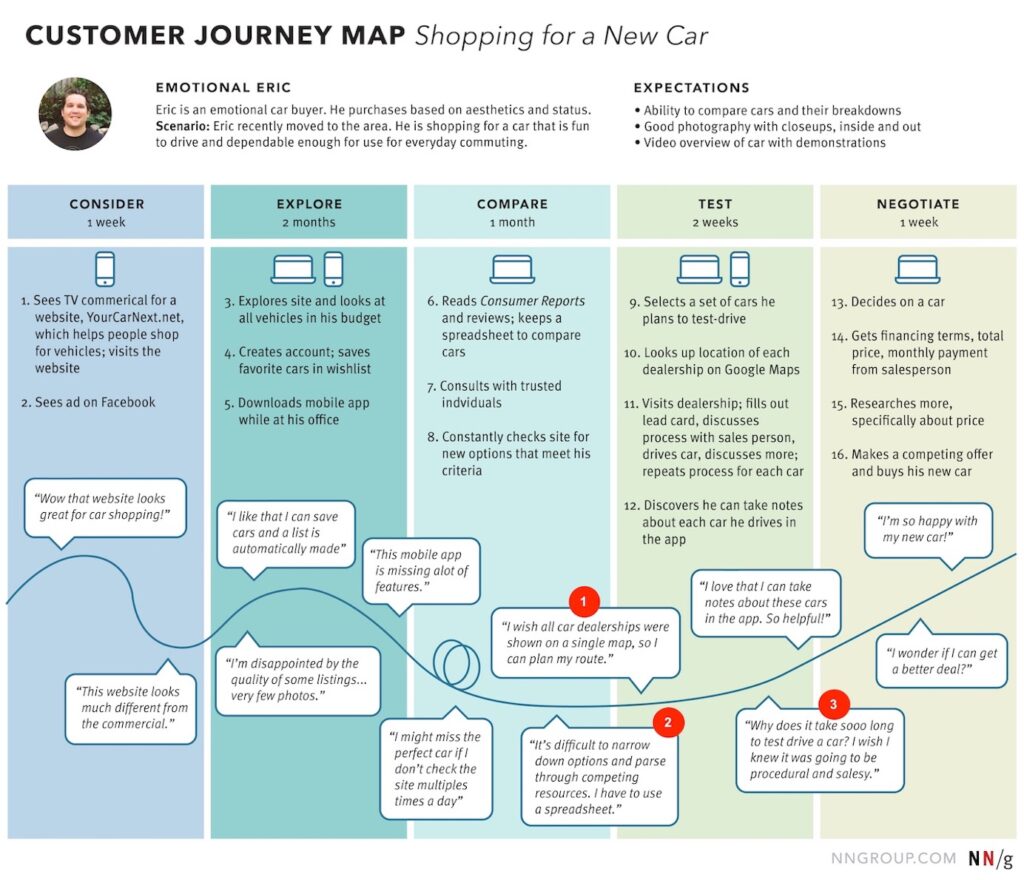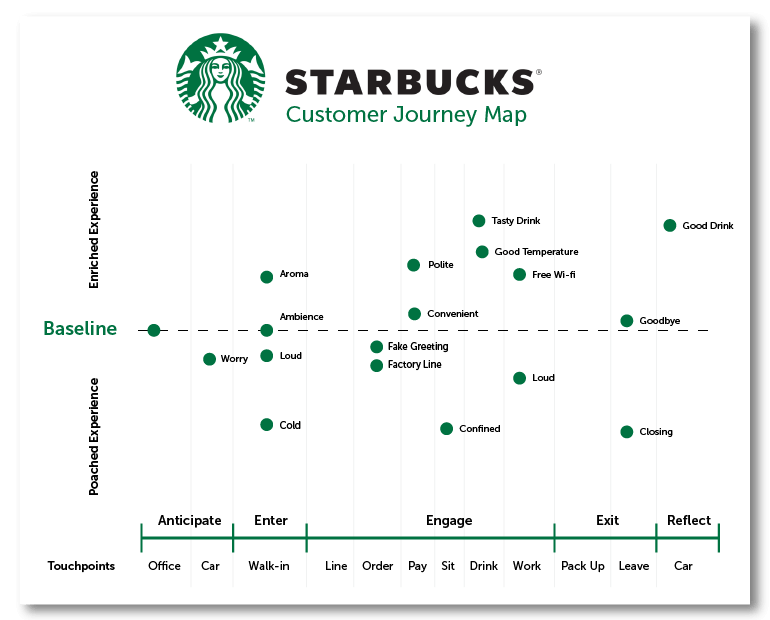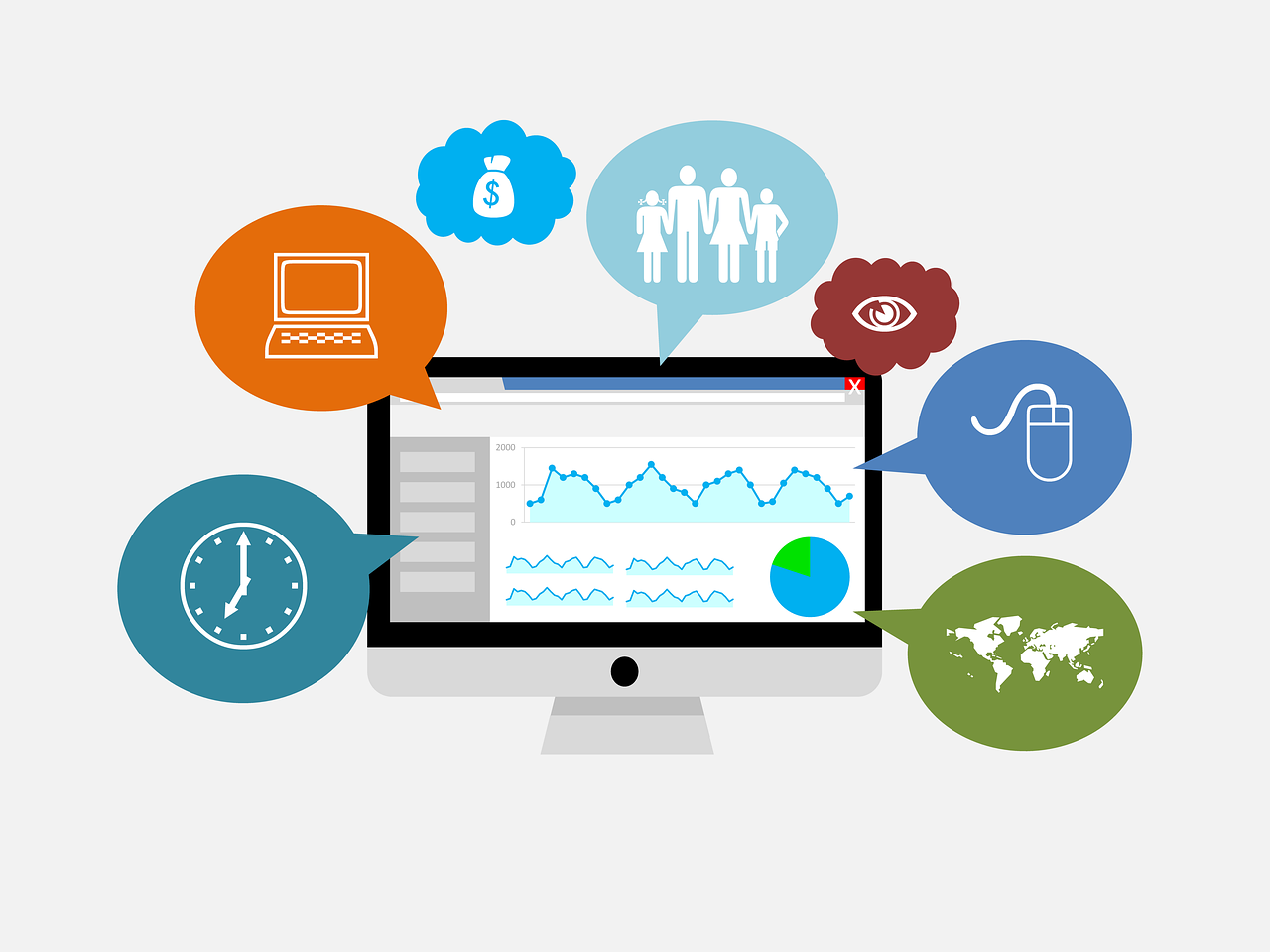In the ever-evolving landscape of customer experience (CX), understanding your customers’ journeys is no longer an option, but a necessity. Customer Journey Analytics (CJA) empowers companies to map, analyse, and optimize the touchpoints customers encounter throughout their interactions with a brand. This data-driven approach unlocks valuable insights into customer behaviour, preferences, and potential pain points, ultimately enabling businesses to tailor experiences, enhance engagement, and drive conversions. With the advent of advanced technologies and data analytics tools, companies can now gain unprecedented insights into their customers’ behaviors, preferences, and needs. This guide explores the intricacies of customer journey analytics in 2024 and delves into how leveraging predictive analytics can enhance these insights.
Understanding Customer Journey Analytics (CJA)
Customer journey analytics involves tracking and analysing every interaction a customer has with a brand across various touchpoints. From the initial awareness stage to the final purchase and beyond, each step in the customer journey presents an opportunity for businesses to engage, delight, and retain their customers.
CJA involves mapping, analysing, and optimizing the complete customer journey, encompassing all touchpoints from initial awareness (e.g., discovery through online content) to post-purchase interactions (e.g., product reviews and customer service). This holistic approach provides a comprehensive understanding of how customers interact with your brand across various online and offline channels, including:
- Websites
- Mobile apps
- Social media platforms
- Email marketing
- In-store experiences
- Customer service interactions
- Third-party review platforms
Benefits of CJA:
CJA offers numerous benefits that can significantly impact your business:
- Improved customer experience: By identifying pain points and friction points in the customer journey, businesses can optimize touchpoints and personalize interactions to create a smoother and more enjoyable experience.
- Increased customer engagement: Understanding how customers interact with your brand helps personalize communication and recommendations, leading to higher engagement across all touchpoints.
- Enhanced conversion rates: By tailoring experiences and addressing potential roadblocks throughout the customer journey, businesses can improve conversion rates and drive desired actions.
- Reduced customer churn: Identifying at-risk customers and understanding the reasons behind churn allows businesses to implement proactive strategies to retain valuable customers.
- Data-driven decision-making: CJA provides businesses with data-backed insights to inform strategic decisions across the organization, from marketing and sales to product development and customer service. This allows for:
- More targeted marketing campaigns.
- Improved product development roadmaps.
- Enhanced customer service strategies.
- personalization and enhanced marketing automation.
Key Techniques and Tools for CJA:
- Customer journey mapping: This involves visually outlining the different stages of the customer journey, identifying all touchpoints, and understanding the emotions and motivations behind them. Several methods can be used for customer journey mapping, including:
- Persona-based mapping: Creating detailed profiles of different customer personas and mapping their individual journeys.
- Experience mapping: Visually illustrating the entire customer experience from start to finish, highlighting all touchpoints and potential interactions.
- Event-driven mapping: Focusing on specific events that trigger customer interactions and mapping the journey around those events.
- Data collection and analysis: Utilizing various data sources is crucial for effective CJA. These sources can include:
- Website analytics: Data collected through website analytics tools provides insights into user behavior on your website, such as page visits, time spent on specific pages, and conversion paths.
- CRM data: Customer relationship management (CRM) data provides valuable information about customer interactions, including purchase history, past service requests, and communication history.
- Social media analytics: Analyzing data from social media platforms can reveal customer sentiment, brand perception, and engagement levels.
- Customer surveys and feedback: Conducting surveys and collecting direct feedback from customers allows you to directly understand their thoughts, feelings, and experiences.
Examples of Customer Journey Analytics (CJA) in Action:

1. E-commerce Company:
- Scenario: An e-commerce company wants to understand why customers are abandoning their shopping carts before completing purchases.
- CJA Analysis: Utilizing website analytics and user behavior data, the company identifies several pain points in the checkout process, including a complex registration form, lack of guest checkout option, and hidden shipping costs.
- Action: Based on these insights, the company simplifies the checkout process, offers a guest checkout option, and displays shipping costs upfront. This leads to a significant increase in completed purchases.
2. Travel Booking Platform:
- Scenario: A travel booking platform wants to improve customer engagement and personalize the travel experience.
- CJA Analysis: By analyzing customer data, the platform identifies that users who browse specific destinations but don’t book are interested in family-friendly activities.
- Action: The platform leverages this information to send personalized email campaigns highlighting family-friendly activities and travel packages at their desired destinations. This results in increased customer engagement and bookings.
3. B2B Software Company:
- Scenario: A B2B software company wants to understand how potential customers interact with their website and identify opportunities to convert leads into paying customers.
- CJA Analysis: Utilizing CRM data and website analytics, the company discovers that potential customers visit specific product pages but hesitate to contact sales.
- Action: Based on this insight, the company implements chatbots on product pages to answer frequently asked questions and address potential concerns. They also offer free trials and personalized demos, leading to increased conversions.
4. Brick-and-Mortar Retail Store:
- Scenario: A brick-and-mortar retail store wants to improve customer satisfaction and in-store experience.
- CJA Analysis: The store utilizes heatmaps and customer surveys to identify areas of high traffic congestion and product categories with limited information.
- Action: Based on the analysis, the store re-organizes product placement, adds more staff to congested areas, and provides self-service kiosks for easier product information access. This leads to faster customer service, enhanced product discoverability, and improved customer satisfaction.
5. Healthcare Provider:
- Scenario: A healthcare provider wants to streamline the patient experience and improve appointment scheduling.
- CJA Analysis: Analyzing patient data and appointment scheduling patterns, the provider identifies a high number of missed appointments due to last-minute cancellations and reminders received through phone calls.
- Action: Implementing a mobile app allows patients to reschedule appointments online and receive text message reminders. This leads to improved appointment attendance and reduces administrative burden.

These examples demonstrate how CJA can be applied across various industries and business types to gain valuable insights, address customer pain points, and ultimately improve customer experience, engagement, and conversions.
Key Components of Customer Journey Analytics:
- Data Collection: Gathering data from multiple sources, including website visits, social media interactions, email engagement, and purchase history.
- Data Integration: Consolidating data from disparate sources to create a unified view of the customer journey.
- Analysis: Using advanced analytics techniques to uncover patterns, trends, and insights within the data.
- Visualization: Presenting the findings in visually compelling dashboards and reports for easy interpretation.
- Actionable Insights: Translating data-driven insights into actionable strategies to optimize the customer journey and drive business growth.
Case Study: Starbucks
Starbucks, a global coffeehouse chain, leverages customer journey analytics to deliver personalized experiences to its customers. By analyzing customer data from its mobile app, website, and in-store interactions, Starbucks identifies patterns in purchase behavior and preferences. This enables the company to recommend personalized drink options, send targeted promotions, and enhance the overall customer experience.

Leveraging Predictive Analytics for Enhanced Customer Insights
Predictive analytics takes customer journey analytics to the next level by forecasting future outcomes and behaviours based on historical data and statistical algorithms. By predicting customer preferences, churn risk, and lifetime value, businesses can proactively tailor their marketing strategies and offerings to meet individual needs.
Benefits of Predictive Analytics:
- Anticipating Customer Needs: Predictive models can forecast future purchase behaviour and preferences, enabling businesses to anticipate customer needs and offer personalized recommendations.
- Reducing Churn: By identifying customers at risk of churning, businesses can implement targeted retention strategies to minimize customer attrition.
- Optimizing Marketing ROI: Predictive analytics helps businesses allocate marketing resources more effectively by targeting high-value customers with relevant offers and promotions.
- Improving Product Development: By analysing customer feedback and behaviour, businesses can identify opportunities for product innovation and improvement.
Examples of Predictive analysis
Predictive analytics is a powerful tool used across various industries to forecast future outcomes and behaviors based on historical data and statistical algorithms. Here are a few examples and case studies showcasing the application of predictive analytics:
- Netflix:Netflix is renowned for its sophisticated recommendation system, which uses predictive analytics to suggest personalized content to users. By analyzing viewing history, ratings, and browsing behavior, Netflix predicts which shows and movies users are likely to enjoy, enhancing the user experience and driving engagement.
- UPS:United Parcel Service (UPS) utilizes predictive analytics to optimize its logistics and delivery operations. By analyzing factors such as weather patterns, traffic congestion, and package volume, UPS forecasts delivery times more accurately, improves route planning, and minimizes delays, ultimately enhancing customer satisfaction.
- Ford: Ford Motor Company employs predictive analytics in its vehicle maintenance and servicing operations. By analysing data from sensors embedded in vehicles, Ford can predict potential mechanical issues before they occur, enabling proactive maintenance and reducing downtime for customers.
- Bank of America: Bank of America utilizes predictive analytics to detect fraudulent activity and prevent unauthorized transactions. By analysing transaction data, spending patterns, and other variables, Bank of America’s predictive models can identify suspicious behaviour in real-time, helping to mitigate financial losses and protect customers’ accounts.
- Healthcare: Predictive analytics is increasingly being used in healthcare to improve patient outcomes and reduce costs. For example, healthcare providers can use predictive models to identify patients at risk of developing chronic conditions, allowing for early intervention and personalized treatment plans.
- Retail: Retailers like Walmart and Target leverage predictive analytics to optimize inventory management and pricing strategies. By analysing sales data, seasonal trends, and competitor pricing, retailers can forecast demand more accurately, minimize stockouts, and maximize profitability.
- Airbnb: Airbnb utilizes predictive analytics to forecast demand and adjust pricing dynamically. By analysing factors such as location, property type, and time of year, Airbnb’s predictive models can recommend optimal pricing strategies for hosts, maximizing occupancy rates and revenue.
These examples illustrate the diverse applications of predictive analytics across industries, highlighting its value in driving business growth, enhancing operational efficiency, and improving customer experiences.
Case Study: Amazon
Amazon, the e-commerce giant, is renowned for its use of predictive analytics to personalize the shopping experience for its customers. Through its recommendation engine, Amazon analyses past purchase history, browsing behaviour, and demographic data to predict which products customers are likely to purchase next. This enables Amazon to serve personalized product recommendations on its website and through email campaigns, driving higher conversion rates and customer satisfaction.
Food Delivery Case Study:
Conclusion
Customer journey analytics (CJA) and predictive analytics have become essential tools for businesses in today’s competitive landscape. By mapping, analyzing, and optimizing the customer journey, organizations can gain a deeper understanding of their customers’ needs, wants, and behaviors. This empowers them to:
- Personalize experiences across all touchpoints, leading to increased customer satisfaction and loyalty.
- Drive targeted marketing and sales efforts, resulting in higher engagement and conversions.
- Proactively address customer pain points and improve retention rates.
- Make data-driven decisions across the organization, fostering continuous improvement and innovation.
As technology continues to evolve and customer expectations rise, incorporating CJA and predictive analytics will be crucial for businesses to thrive. By embracing these powerful tools, companies can unlock valuable customer insights, strengthen customer relationships, and achieve sustainable growth in the years to come.
In 2024, customer journey analytics and predictive analytics are indispensable tools for businesses looking to gain a competitive edge in the marketplace. By understanding the intricacies of the customer journey and leveraging predictive insights, companies can deliver personalized experiences, drive customer loyalty, and ultimately, fuel business growth.


Leave a Reply